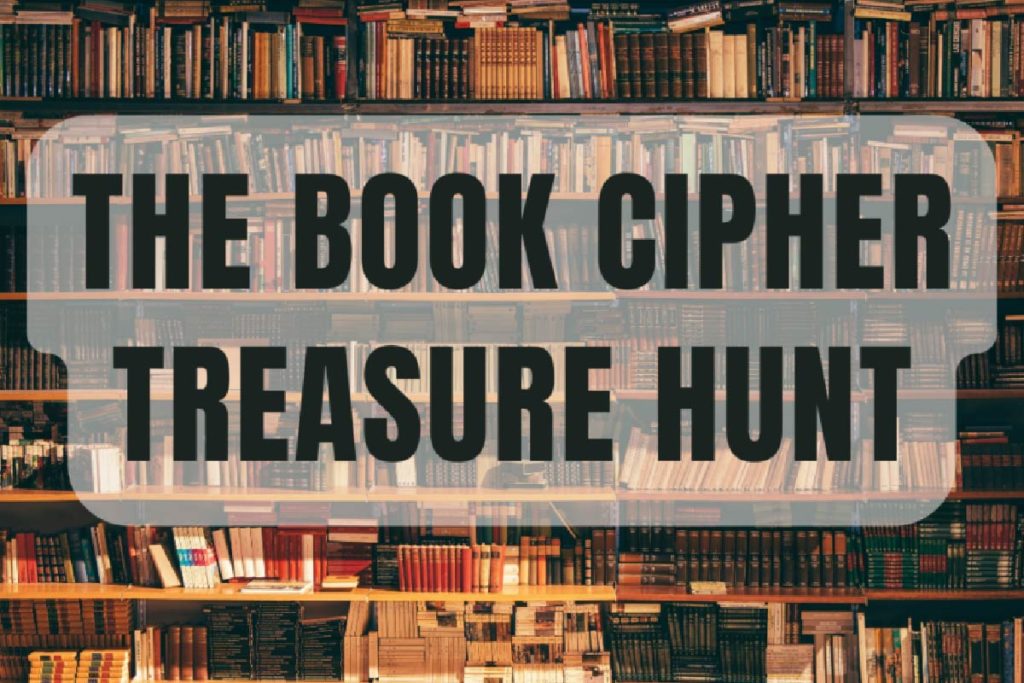
It’s early morning and I’m researching anything and everything there is to know about secret codes and ciphers. More specifically, this morning I’m going down the rabbit hole learning about book ciphers.
Ever since I learned about book codes (a cousin to the Ottendorf cipher) from the movie National Treasure, I knew somehow I needed to incorporate this into a game with my kids. The idea that there are secret numbers on the back of the Declaration of Independence flooded my brain with possibilities.
But which direction do I go? I can go secret spy thriller where we discover a dropped code book while we’re out for a walk (I’m so going to do this at some point so stay tuned), or maybe even go the route of American history and “find” an old copy of Lincoln’s Gettysburg Address in the attic (which you can check out in my Ottendorf Cipher Treasure Hunt here).
But today, we’re going a different route. Today, we’re going to the library.
The library has always held a certain mystique to me. Other than all the cool new things they now offer (There’s a maker space at ours, and they do themed escape rooms. You seriously need to check out what your library is doing.), there is something special about the library.
How to Make a Book Cipher Treasure Hunt
To make a book cipher treasure hunt, you simply plant clues in selected books. Each clue will be encoded using a book cipher, and the key to each cipher will the book in which the clue was found. The clue will be the title of the next book which will contain another encoded message and the new book will become the new key. The final book will contain the prize.
While there is a bit of planning that needs to happen ahead of time, it’s all quite simple. Even better, you can use my clues, my suggested books, and the tips below to make the preparation go much quicker and smoother.
What is a Book Cipher?
Before going too deep into how to go about creating this treasure hunt, let’s first take a look at what a book cipher is.
A book cipher (also known as a book code and Arnold cipher) is a type of substitution cipher in which words of the original message are replaced by a set of three numbers that point to a specific location where you can find that word in a book. The first number represents the page, the second number represents the line on that page, and the third number represents the word on that line.

The final coded message will have either a vertical or horizontal list of three numbers. Check out my article on Book Ciphers to get a much more complete explanation.
Here are a couple tips when making your code:
- Try to use common words when possible. Otherwise you’re going to be looking everywhere for your word.
- You can skip looking up simple articles like “a” “an” and “the” and just write them out.
- It’s generally easier to find words in the past tense than in the present tense. For example, one of my clues has the word “rises” which didn’t exist in some of the books I was using. The past tense “rose,” however, showed up half a dozen times.
- To simplify, you can add suffixes to the ciphertext instead of looking for the complete word. For example, it might be easier to find the word “sleep” instead of “sleeping.” So I would write the code 13.5.13 for “sleep” and turn it into “13.5.13-ing.”
- Seeing as we’re in the age of technology, you can also use a pdf of a book to help with your research. Use a simple search tool (Ctrl/Command+F) and find the location of your words, and then find the specific spot in the physical book you plan to use in your treasure hunt.
Selecting Key Texts to Use for Book Ciphers
The important thing in choosing the right books is that you want to choose books that have titles with common words. You’re going to have heck of a time trying to find any book with the words “Mr. Penumbra’s 24-Hour Bookstore: A Novel”, for example. If you’re able to use the whole library, then your choices are even better.
Some good choices with simple titles include:
- The Mouse and the Motorcycle (Beverly Cleary)
- Little Women (Louisa May Alcott)
- A Light in the Attic (Shel Silverstein. A lot of his titles use common words)
- The Two Towers (JRR Tolkien)
- The Red Pony (John Steinbeck)
- The Pearl (John Steinbeck)
- Our Town (Thornton Wilder)
- Light in August (William Faulkner)
- This Side of Paradise (F. Scott Fitzgerald)
- The Old Man and the Sea (Ernest Hemingway)
The list can go on. If you notice, I’ve stuck with a lot of classic literature. All of these books are common enough to find in almost any library. They’re also popular enough that your library will have multiple copies available (you don’t want to set up your hunt only to find out one of the books you were going to use is checked out). They’re also all in the public domain.
Not to get too into the weeds, but if a book is old enough it’s probably in the public domain, and no longer subject to copyright. This is helpful because with a quick google search you can often find a free online pdf of that book. Run a word search (Control/Comand+F) on the digital document to locate specific words for your clues. It is much easier to then find a word in the physical book when you know it’s in the beginning of chapter 5.
Here are the books I’ve selected for my hunt:
- The Tales of Beedle the Bard by J.K. Rowling (This will have my first clue so it’s okay that the title is unusual. I can also bring my personal copy in case it’s checked out.)
- The Return of the King by J.R.R. Tolkein
- The Sun Also Rises by Ernest Hemmingway
- The Silver Chair by C.S. Lewis
- Many Waters by Madeline L’Engle (which will have the final prize)
I decided to limit my search to five books. I have found that to be just enough (at least for my 6- and 8-year-olds). Any more will be a little too much and they’ll get tired of the game. I want to keep them engaged for as long as I can, but never go too far.
Preparing the Clues for a Book Cipher Treasure Hunt
Once I decided which books I was going to use, I made sure they were all available in my local library and I wrote down all the call numbers. I then took a quick trip to the library and checked them all out.
For each book, I looked up the words for the next title. For example, in Tales of Beedle the Bard I found the words the words “The Return of the King” and so on.
If you’re interested, here are the clues I used and a photo of the edition of the books I used (One downside to using books in the public domain is that there are often dozens of editions available. It is likely my numbers will not line up with yours, which is why I suggest finding a pdf of the book to help you search for the word to help you narrow down the location in the physical book).
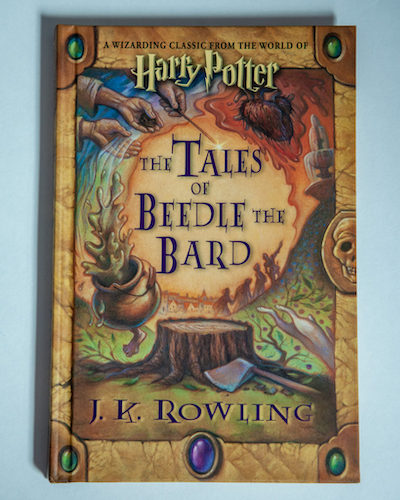

“The Tales of Beedle the Bard” by JK Rowling. This is my starting place and has the clue for JRR Tolkien’s “The Return of the King.”
Clue to “The Return of the King”: 33.5.2 14.7.6 49.1.4 76.3.2
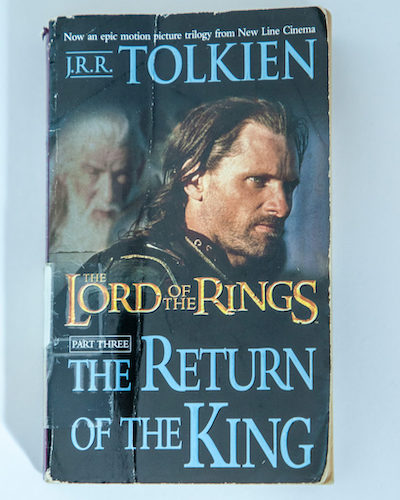

The Return of the Kind by JRR Tolkien. This will have the clue for Ernest Hemingway’s “The Sun Also Rises.”
Clue to “The Sun Also Rises”: 138.1.9 206.1.6 165.21.13 110.33.9

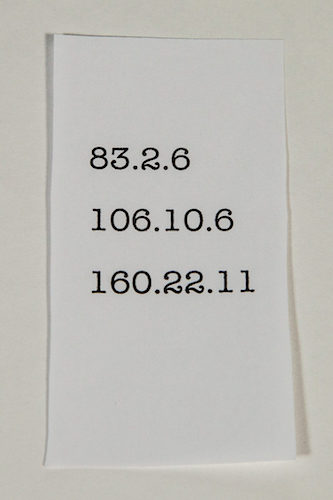
The Sun Also Rises by Ernest Hemingway. This has the clue to CS Lewis’ “The Silver Chair.”
Clue to “The Silver Chair”: 83.2.6 106.10.6 160.22.11
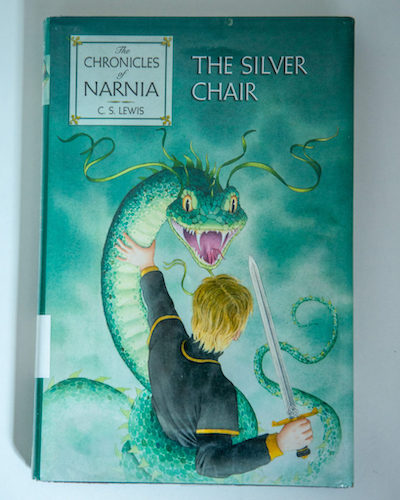
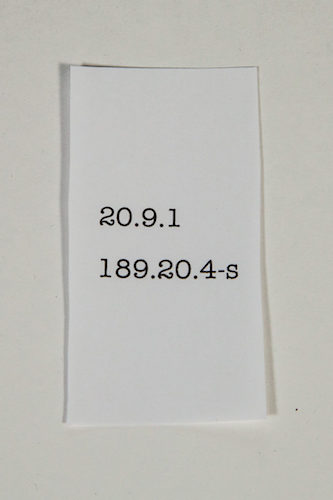
The Silver Chair by CS Lewis. This will have the clue to Madeleine L’Engle’s “Many Waters” which will have the final prize.
Clue to “Many Waters”: 20.9.1 189.20.4-s
Once you’ve written down all your clues, return the books to the library.
The Day of the Hunt: How to Plant Clues for Your Treasure Hunt
The day has come to set up your treasure hunt. Before you go out, do a quick library search to make sure no one has checked out your books. You’d hate to get there only to be sidelined by a book that’s checked out.
When it comes to hiding the clues, you can do this one of two ways depending on whether you have backup from a spouse or not (or trust your kids to be alone in the library for 10 minutes).
For those of you who like to go to the airport 5 hours early (no judgement. I get it.), run out to the library without the kids and plant all the clues. Then you can either go home to get the kids or have your partner in crime meet you at the library with the kids.
If you don’t have the time or can’t get there early, don’t fret. Luckily you should have an idea of where all the books are since you’ve checked them all out before. Have your kids look for their own books while you look for your own (It’s not a lie. You are looking up your own book. Just not to check out.). While they’re distracted, place all your clues.
Game Time: The Treasure Hunt
It’s after all the clues are set that you pull out the first book (in my case, JK Rowling’s The Tales of Beedle the Bard). I casually hand it to my son and say something like, “Hey check it out! They have ‘Beedle the Bard’ too!” The clue of course is sticking out the top and should be irresistible for anyone’s curiosity.

I may also write something like “Top Secret” on the paper with the clue just to pique their interest. When they inevitably ask what it might be, I causally point out that it looks like a book cipher and give a quick explanation of what it is.
When they discover that the clue translates to “The Return of the King”, I show them how to do a library search on one of the computers. (BTW, this hunt has the added benefit of teaching kids how to use a library catalogue.)
After finding The Return of the King and following the other clues, the last book Many Waters is when my kids get their final prize.
You might be asking yourself right now, what’s the prize? When it comes to treasure hunts there are lots of good options for prizes, and you can find a much more in-depth list here: 15 Epic Treasure Hunt Prizes for Kids.
You can go epic and reveal your big trip to Disney, or make a certificate for extra technology time. I decided, what better way to end our trip to the library (with new books to explore!) than with a nice pizza and ice cream surprise! Never gets old.
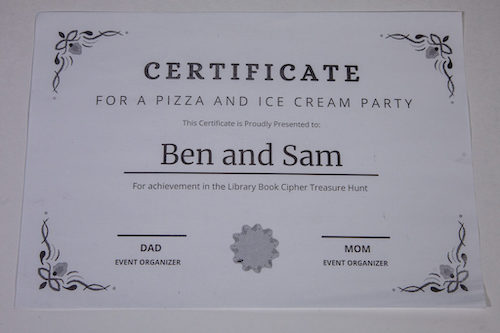
Recent Posts
For anyone new to Dad Stuff, you should know that I’m a big fan of making treasure hunts for my kids. I love to create an epic story where they have to solve clues and ciphers to discover a special...
I was watching National Treasure with the family last Fourth of July and couldn’t help but ask myself, how can I make a treasure hunt like that for my kids? I mean, who wouldn’t want to live out...
